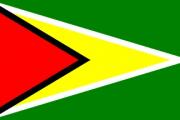Book Launch Documenting the History of Agricola - Muriel and Jennifer Branche
In a joint observance of Emancipation Day 2016 and Guyana’s Golden Jubilee of Independence, the Museum of African Heritage within the Department of Culture of the Ministry of Education organised a programme of events which included a photographic exhibition (link to mission webpage on the exhibition) and a book launch. Co-authored by retired educator, Muriel Doreen Branche and her daughter, Jennifer Branche, the book documents the history of one of Guyana’s earliest villages, Agricola.
The book traces the roots of the village of Agricola which was established on the southern boundary of the former Plantation Rome. Owned by Richard Michael Jones, Plantation Rome was reputed to be one of the finest establishments in the colony of Demerara, deemed suitable for the temporary accommodation of a newly installed Governor. Following the Emancipation Proclamation in 1834 and the compulsory four years of “apprenticeship”, the newly freed Africans purchased 177 plots of land on the southern boundary of Plantation Rome for the establishment of their village.
The authors posit that the founding fathers of the free village included Chandler, Hercules and Figaro. The latter had been brought from Nigeria at the age of 14 and had served as a house slave at the Great House of Plantation Rome. Changing his name two visionaries to establish a proprietary village. Consistent with the Roman theme of both their former Plantation and their new village, the free blacks christened their streets with the names of outstanding Roman conquerors, Remus, Romulus, Caesar, Cato, Titus and Brutus. The community spirit of the free blacks was said to be the key to Agricola’s growth and sustained development. Challenges were overcome and Agricola, together with a handful of other free villages of the era, developed the blueprint for the nation state that would evolve.
Under the leadership of the Village Council, Agricola thrived socially, culturally and economically. The relatively tiny village would eventually welcome a diverse population including not only free blacks from the West Indies, but also a rainbow of ethnicities including Chinese, Portuguese, East Indians and Amerindians. Documenting significant developments in the community, the authors recount the decline of the village following its incorporation into the Greater Georgetown region in the 1970s, when the Village Council ceased its operations and the community spirit began to decline. Migration and the shift in the country’s economic fortunes took their toll, and the once flourishing village began to experience unemployment and crime. Concluding on a note of redemption, the authors exhort the contemporary villagers to rise above their circumstances and emulate the founding fathers of the village who moulded a vibrant and prosperous community from the ashes of centuries of slavery.


